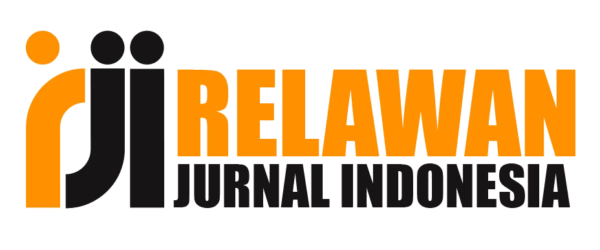Implementation of STEM integrated problem based learning model to improve student creativity
Abstract
Keywords
References
Zayyinah, Zayyinah, Erman Erman, Zainul AI Supardi, Eko Hariyono, and Binar K. Prahani. "STEAM-Integrated Project Based Learning Models: Alternative to Improve 21st Century Skills." In Eighth Southeast Asia Design Research (SEA-DR) & the Second Science, Technology, Education, Arts, Culture, and Humanity (STEACH) International Conference (SEADR- 2021), pp. 251-258. Atlantis Press, 2022.
Partnership for 21st. (2015). 21st CENTURY STUDENT OUTCOMES. Донну, 1–9. http://www.p21.org/our-work/p21-framework
Kemendikbud, 2017. Pendidikan Karakter Dorong Tumbuhnya Kompetensi Siswa Abad 21 diakses dari https://www.kemdikbud.go.id/main/blog/2017/06/pendidikan karakter-dorong-tumbuhnya-kompetensi-siswa-abad-21 pada tanggal 23 Januari 2022.
Hanif, S., Wijaya, A.F.C., & Winarno, N. (2019). Enhancing Students’ Creativity through STEM Project-Based Learning. Journal of Science Learning. 2(2).50-57
Adawiyah, R., Harjono, A., Gunawan, G., & Hermansyah, H. (2019). Interactive e-book of physics to increase students’ creative thinking skills on rotational dynamics concept." In Journal of Physics: Conference Series, vol. 1153, no. 1, p. 012117
Apriliana, M. R., Ridwan, A., Hadinugrahaningsih, T., & Rahmawati, Y. (2018). Pengembangan Soft Skills Peserta Didik melalui Integrasi Pendekatan Science, Technology, Engineering, Arts, and Mathematics (STEAM) dalam Pembelajaran Asam Basa. Jurnal Riset Pendidikan Kimia (JRPK), 8(2), 101 - 110. https://doi.org/10.21009/JRPK.082.05
Pratiwi, Y., Yulia, S. R., & Ramli, R. (2021). Validity of physics student e-book based on the STEM approach to improve knowledge competence. Journal of Physics: Conference Series, 1876(1). https://doi.org/10.1088/1742-6596/1876/1/012031
Zubaidah, S. (2019). STEAM (Science, Technology, Engineering, Arts, and Mathematics): Pembelajaran untuk Memberdayakan Keterampilan Abad ke-21. Seminar Nasional Matematika Dan Sains, September, 1–18.
Vistara, M. F., Asikin, M., Ardiansyah, A. S., & Pudjiastut, E. (2022). Problem Based Learning Berorientasi STEAM Context terhadap Kemampuan Berpikir Kreatif Matematika Siswa. Prosiding Seminar Nasional Matematika (PRISMA), 5, 451–460. https://journal.unnes.ac.id/sju/index.php/prisma/article/view/54564
Dewi, HR, Mayasari, T. & Handhika, J., (2017). Peningkatan Keterampilan Berpikir Kreatif Siswa Melalui Penerapan Inkuiri Terbimbing Berbasis STEM. Prosiding Seminar Nasional Pendidikan Fisika III.
Purwaningsih, E., Sari, S. P., Sari, A. M., & Suryadi, A. (2020). The effect of stem-pjbl and discovery learning on improving students’ problem-solving skills of the impulse and momentum topic. Jurnal Pendidikan IPA Indonesia, 9(4), 465–476. https://doi.org/10.15294/jpii.v9i4.26432
Didik, P., Kelas, D. I., Ipa, X. I. I., Padang, S., Indrawati, S., & Ningsih, P. (2020). PENERAPAN MODEL PEMBELAJARAN PBL TERINTEGRASI STEM UNTUK MENINGKATKAN AKTIVITAS DAN HASIL BELAJAR SMAN 7 Padang. 13(3), 443–450.
Manobe, S. M., & Wardani, K. W. (2018). Peningkatan Kreativitas Belajar Ipa Menggunakan Model Problem Based Learning Pada Siswa Kelas 3 SD. Didaktika Dwija Indria, 6(8).
Farwati, R., Permanasari, A., Firman, H., & Suhery, T. (2017). Integrasi problem based learning dalam STEM education berorientasi pada aktualisasi literasi lingkungan dan kreativitas. Prosiding Seminar Nasional Pendidikan IPA, 198–206.
Sugiyono. (2019). Metode penelitian kuantitatif. Alfabeta: Bandung.
Conradty, C., & Bogner, F. X. (2018). From STEM to STEAM: How to Monitor Creativity. Creativity Research Journal, 30(3), 233–240. https://doi.org/10.1080/10400419.2018.1488195
Ernawati, Halim, A., & Syukri, M. (2020). Integration of Problem Based Learning (PBL) and Engineering is Elementary (EiE) to improve students’ creativity. Journal of Physics: Conference Series, 1460(1). https://doi.org/10.1088/1742-6596/1460/1/012117
DOI: https://doi.org/10.17509/wapfi.v10i1.55082
Refbacks
- There are currently no refbacks.
Copyright (c) 2025 Universitas Pendidikan Indonesia (UPI)

This work is licensed under a Creative Commons Attribution-ShareAlike 4.0 International License.
The Journal Wahana Pendidikan Fisika http://ejournal.upi.edu/index.php/WapFi/ is licensed under a Creative Commons Attribution-ShareAlike 4.0 International License
The Journal WaPFi (Wahana Pendidikan Fisika).
All rights reserverd. pISSN 2338-1027 eISSN 2685-4414
Copyright © Faculty of Mathematics and Science Education (FPMIPA) Universitas Pendidikan Indonesia (UPI)










